Making sense of the menopause
This week we’re looking into a topic that almost never gets mentioned at school but affects almost all of us, one way or another. It’s the menopause. And we’ll hear why it happens and when it happens, and what we can do to lessen the effects when it does. Plus in the news, COVID vaccines for kids: is the side effect everyone's worried about worth worrying about, farmers toilet train cows, and China clamps down on kids playing computer games.
In this episode
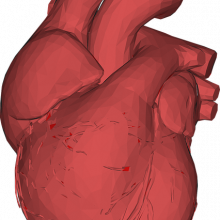
01:07 - Is myocarditis a risk of COVID jabs in kids?
Is myocarditis a risk of COVID jabs in kids?
Trisha Singh, Edinburgh Royal Infirmary
One of the reasons that the JCVI, the group responsible for advising on UK vaccine policy, struggled to provide a clear recommendation on the vaccines for children, and hence referred the question to the chief medical officers, is because the vaccines carry a small risk of a side effect called myocarditis. The rate at which this occurs is not much higher than the rate we expect to see in the general population anyway, and it occurs more often in unvaccinated people who develop coronavirus infection compared with those protected by a vaccine. So what is myocarditis, and is it a major threat for young people, or are we worrying too much? Trisha Singh is a cardiology researcher looking at myocarditis at Edinburgh Royal Infirmary and spoke with Chris Smith...
Trisha - So myocarditis is inflammation of the heart muscle. Usually when we see patients in hospital, they usually present with, most commonly, chest pain, breathlessness, palpitations. However, some people may not get very many symptoms at all.
Chris - And when people have this, does it get better? Does it get worse? Does it stay the same?
Trisha - In most people, myocarditis does get better and your heart muscle recovers, and the inflammation settles down. A very small percentage can go on to having further problems down the line, but that is a very, very small percent.
Chris - Do we know what causes it?
Trisha - The most common cause of myocarditis is usually following a viral infection. Now this can be a flu-like virus, it can be a tummy bug, skin infections. Less common causes of myocarditis can include medications. It has been noticed in vaccines, not just the COVID-19 vaccine but also in the past, we've seen it in smallpox and also influenza vaccines.
Chris - And can people who catch the new coronavirus, get it. Is it one of the consequences of coronavirus infection?
Trisha - It is. So we have seen patients who unfortunately have developed a COVID-19 infection have also had cases where they've also developed myocarditis as well
Chris - But do we know what's actually going on? If you were to look at the heart, when an individual is suffering with a case of myocarditis, what is actually happening that's making those symptoms and making the heart behave in that way?
Trisha - That very much depends on the cause of myocarditis. If it's, for example, viral infection related, what's happening is that all of your inflammatory cells that your body normally releases when it's fighting an infection infiltrate the heart muscle, and cause inflammation in the muscle itself. And that inflammation of the heart muscle is what causes the symptoms.
Chris - And so we think that there are some people who, when they get vaccinated, the immune response they make to the vaccine does the same thing as though they were infected with the virus for real, and that inflammatory response spills over temporarily into the heart?
Trisha - I think the difficulty with vaccine related myocarditis is we're not entirely sure the process in which it causes myocarditis, and there's lots of theories. So one of them is that, you know, your immune system kind of goes into hyperdrive and as a result can result in myocarditis
Chris - It's happening to more boys than girls. Do you think that that's a real thing? Or do you think that that actually is a statistical artefact, it's just that we happen to have detected more cases in males than females so far?
Trisha - No, I think that's actually a genuine thing. So myocarditis in general, even when it's not vaccine related, is far more common in young people. And when I say young, kind of, under the age of 30, and far more common in men
Chris - What then are the implications for vaccination in the context of the new coronavirus in young people? Do you think that it's happening enough that we should worry? Or do you think that it's broadly self-limiting, not really a problem, and therefore it shouldn't receive the kind of prominence it has? Are we blowing this out of proportion?
Trisha - The majority of myocarditis is self-limiting and people have a very good prognosis down the line. I wouldn't say that we're blowing it out of proportion, but what I would say is, you know, the number of cases that we're seeing which are vaccine related is A, very, very small and B, I think it's a balance of risk and benefit that you get from the vaccines. And I think the benefit that we're getting from vaccines is much higher currently compared to the number of cases that we're seeing which are vaccine related.
Chris - What we have seen is that the Chief Medical Officer said that we're going to give children one dose. Some people are interpreting that as because the cases of myocarditis have been more common after the second dose. Is it that they're just saying one dose because we're going to see what happens after one dose, we might not need to give anyone any more boosters, or are they actually acting on the fact that there does appear to be this slight increase in numbers after the second dose, and that's why they've taken that as a cautionary step?
Trisha - Probably a combination of both. And I think we've seen less myocarditis in general than we normally do in the last year, and I suspect a lot of that is because of the effects of lockdown. You know, we haven't seen as many people with flu symptoms and similarly, we haven't seen many people with myocarditis. And I think with giving the single vaccine in children, at least for the time being, it's probably a combination of both.
Chris - That's fascinating that you're saying we've actually got less myocarditis at the moment than we would expect to seasonally anyway! Could at least a proportion of the association with apparently the vaccine myocarditis be in fact that kids are now coming out of lockdown and they're catching the other stuff again, that might be causing myocarditis is not the vaccine at all?
Trisha - Yes, absolutely. And I think that's why it's really important, you know, when you are seeing children or adults, anyone in hospital, and they've got myocarditis, there's a good chance that they could just be having this because, you know, they picked up a viral infection somewhere else. And the myocarditis is related to that rather than purely vaccine related.
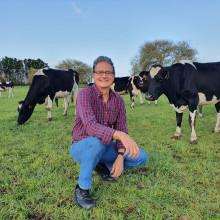
07:48 - Teaching cows to use the toilet
Teaching cows to use the toilet
Lindsay Matthews, University of Auckland
Cows, these days, get something of an environmentally bad rap, and that’s partly thanks to the methane they produce during digestion that contributes to greenhouse gas emissions. But scientists and farmers also have a problem with something else they generate a lot of: nitrogen-rich urine. And the issue is that they dispense too much of it in one go in one place. But now there might be an answer: toilet-training for cows! Eva Higginbotham spoke to lead author Lindsay Matthews from the University of Auckland...
Lindsay - Cows produce a lot of urine, you know, 20, 30 liters a day each
Eva - Uh, 20 to 30 litres a day of urine is an absolutely amazing amount! Do they just drink tons of water?
Lindsay - Well, they do, yes. You know, they're producing a lot of milk, they're eating a lot of food and they need to drink a lot of water. So they're drinking over a hundred litres of water each a day. It has to go somewhere! And it comes out in great gushes that the soil and the plants can't handle, so the nitrate in the urine gets converted into two polluting products in outdoor settings - so you get the nitrate going through to the water, and you get the nitrate in the soil getting converted to nitrous oxide which is a really potent greenhouse gas. If you're in an indoor situation, you get the urine mixing with faeces and converting immediately to ammonia, which is also a problem for the animals and the environment.
Eva - And so you were trying to find a solution to what to do with all of this urine?
Lindsay - Yeah. So it occurred to us that if we could collect it at source, we could deal with it in an environmentally-friendly way. The nutrients could be reused, they're very good nutrients, it's just not in the quantity that they come out at in a small area. So the idea is to collect the urine, how do we do that? Well, the most obvious solution is to use a toilet. The only problem is that people in the past have tried to toilet train cattle, and haven't really had that much success. So this is what we were faced with as our solution.
Eva - What did you do?
Lindsay - We modelled the training a little bit on what you might do with a toddler, and one of the successful ways of toilet training toddlers is to put them on the toilet. So we had our metaphorical toilet, which was really just a wee room, and it obviously had to be clearly different from anything else otherwise it would be just another part of the barn. So it was green walls, green floor - AstroTurf floor, so not a concrete floor, it had a nice spongy floor. The other thing that was different about it is that if they urinated in there, they immediately got a reward. This was really the first exciting part of the training, is that they made that connection between the urination and the reward so quickly. You know, some of them within two or three urinations they were spinning around and waiting at the hopper for their little tasty treat of liquid molasses. Others took maybe five to ten urinations, but regardless, most of the animals learned this phase very quickly. The other challenge in taking it to application will be the training, and we think that needs to be automated because even though it's relatively quick, you need to be there to observe the animal if you're doing it manually. So we would have a system for automatically detecting urinations and linking that to an automatic delivery of reward. We see that as less of a challenging part of the process
Eva - It's like a robotic toilet trainer for cows
Lindsay - Exactly. Exactly.
Eva - And now that you've trained cows to use a toilet, do you think you could train them to do anything?
Lindsay - Well, within their physical capabilities? Yes. They've got way more ability than a lot of people think they have. And the speed of learning of this rather complex task in interrogating their own feelings, and bladder filling, and then responding appropriately, voluntarily controlling reflexes...that's massive. And so, yeah, we've got a lot of potential
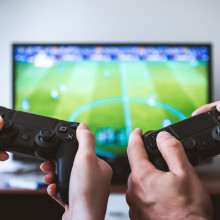
12:50 - China bans kids from computer games
China bans kids from computer games
Josh Ye, South China Morning Post; Andrew Przybylski, University of Oxford
The computer games industry has boomed in recent decades. Worth nearly $200 billion annually, it eclipses Hollywood and is growing at nearly 10% per year. But that might be about to change in China, because under 18s there are now forbidden from online games from Monday to Thursday, and can spend just one hour on Fridays, Saturdays, Sundays and public holidays playing. The ban, say the Chinese authorities, is designed to “protect the physical and mental health of children”. Chris Berrow, who presents our Naked Gaming podcast, reports...
Chris - It's been a difficult week for gamers. China's video game regulator has announced harsh restrictions that limit how long you can play for. Now, if you're under the age of 18, you can only play for an hour on Fridays, weekends, and a few select holidays between eight and nine o'clock in the evening. The regulator also instructed gaming companies to actively prevent children from playing outside these times after fears that they've been cheating the system by using adult IDs. It's not the first time the authorities have targeted gamers in China. Some restrictions were brought in early this year, but these are the most severe yet. Recently they branded online games as spiritual opium, specifically mentioning a game Honor of Kings published by Tencent. Josh Ye is a gamer who writes for the South China Morning Post. He told me that these new restrictions weren't a surprise
Josh - From a gamer's perspective, because of the tightening of the entire sort of public debate arena, they know the target is squarely at kids. Gamers do feel stigmatised and demonised in many ways. So for teenagers, if you're talking about a 15 year old, 16 year old, they are frustrated for sure. But at the same time that, you know, the general sort of belief of society is that they put a lot of pressure on kids to study and shouldn't be playing as much games.
Chris - So what are some of the problem games in the eyes of the authorities?
Josh - Tencent's Honor of Kings is the one that got the sort of most attention. So like that game was the one that was framed as, you know, 'spiritual opium' because it's the world's most popular game, even though unknown to most Western gamers. You know, it was the first game to average 100 million daily active users. It's readily accessible from a mobile device, and just, you know, it became a sort of a social gathering activity among kids. Last time I checked it made $9.6 billion since its launch in 2015. So that's an absurd amount of money that it made. Gaming in China has always been a bit of a cat and mouse game between the government and the gamers, right? So like gamers know that this is probably not something that the government encourages, but then the government sees like the economic benefits as well as they are a great tool for China to really export their culture and be a medium to tell good China stories.
Chris - The president of Tencent, Martin Lau, said in a statement
Martin - The government does recognise the importance on the economic side and the social side of the internet industry, and also the contribution of the industry to global competitiveness on games. I think the key issue at this point in time is still the amount of time and the amount of money that the minors spend on games. And this is an area that we are very focused on. If that can be achieved, I think that most of the criticism on the gaming industry will be resolved.
Chris - So is there any evidence that gaming is addictive? Professor Andy Przybylski from the Oxford Internet Institute has been researching this question for many years
Andy - From a scientific perspective there's zero support for the idea that either restricting video gameplay to certain days of the week or to a certain amount, a magic number, would yield a positive effect on mental health, on psychological well being, or on the kind of relationships between young people and their parents. And we find in other parts of the world where measures like this have been enacted, such as in South Korea where they try to limit online video game play to maximise study time and maximise sleep, we found after an eight year experiment there is pretty conclusive evidence that the intervention was a failure. It's a bold move, I'm sure there are some parents who are interested and whose ears perked up. But it's certainly not a move that's supported in any way by the science.
Chris - Some parents will say though that kids are simply playing too much
Andy - Does something kind of magical happen to young people when they turn 18? Do they become, you know, able to resist the temptation of the digital world because you know, a clock strikes midnight? And the answer to that is obviously no. And one thing that could have happened is you've missed years of practice balancing video games or other online activities with your studies. And then you show up to university at 18, 19, and all of a sudden, you know, you're out on your own and you can play video games whenever you want for the first time ever. And games companies did research in, you know, ways of making games more immersive and attractive the whole time. So it hits you like a tidal wave. It's a bit like not letting someone practice riding a bicycle, and then when they're 18, just kind of handing them a U lock and saying, good luck.
Chris - The Chinese government hopes this move will create positive energy among young people and educate them with 'correct values', but with little scientific evidence to support the ban, whether it will work remains to be seen

18:24 - Tweaking our environment to tackle obesity
Tweaking our environment to tackle obesity
James Reynolds, Aston University & Helen Brown, The Behavioural Insights Team
Obesity is a very big problem in the UK – a 2020 survey in England found that almost 1 in 3 adults are obese, with around 2 thirds overweight. And according to the latest NHS statistics, there were over 1 million hospital admissions where obesity was a key factor in just one year of recording. But how do we go about tackling this? Taxing unhealthy foods and beverages is being tried and banning certain items altogether is also being talked about, but in a free society these sorts of restrictions are not, shall we say, very palatable. What about, though, if we could address the problem without most of us even realising? What, Cameron Voisey is wondering, if it’s our environment that’s at fault, rather than us?
Cameron - Picture this: you’re tired, hungry and want some quick food. What do you go for? Some fruit perhaps or maybe a chocolate bar instead? Faced with these choices, opting for the healthier one can be hard. But what if our environment was changed, just a little bit, to make healthier choices easier? Could this make a difference?
James - One of the main factors that’s causing this sudden rise in obesity and overweight rates are the unhealthy food environments that surround us
Cameron - That’s James Reynolds from Aston University, whose new research studied minor modifications to 19 workplace canteens. They found that swapping out a few high calorie options with lower calorie alternatives - say a beef burger with a chicken burger - and slightly reducing the portion sizes of the more calorific products, resulted in a 12% decrease in the workers’ calorie intake while at work. Importantly, these weren’t sweeping changes across the whole canteen - only some of the items were altered - but combining small changes can make a big difference
James - This project evaluated two different interventions and we found evidence that adding one to another was much more effective than an intervention in isolation. And there’s every reason to believe that this would continue to be the case with other interventions that are combined to it
Cameron - Similar changes, or ‘nudges’, have also been looked at in supermarkets. Research from the University of Southampton and Deakin University found that a set of simple modifications - like placing fresh fruit and veg by store entrances and removing confectionery from near checkouts - could have a big impact, resulting in around 10,000 extra portions of fruit and veg and 1,500 fewer portions of confectionery being sold per week per store. The same products were there, just in different places. Helen Brown from the Behavioural Insights Team, who was not involved in the study, explained why these findings are so important
Helen - First, it shows the incredible potential of supermarkets to support consumers and make healthy choices really easy, at almost no cost to their bottom line, which is obviously critical for retailers and manufacturers. I think what’s most exciting though is that these interventions were trialled in discount supermarkets, located in economically deprived neighbourhoods. Now, this is really important as we know that obesity and poor diet is socio-economically patterned, and so research in areas of lower income is much, much needed. And I think that’s really what is very exciting about this work
Cameron - But from a behavioural point of view, where does all this come from? Are we really just victims of our environments? James again
James - There is an old view in Psychology that a lot of human behaviour is entirely intention-based, that people do exactly what they intend to do all the time and that merely by changing people’s intentions to, say, eat fewer calories, that might be sufficient to help people lose weight or intend to do whatever else their goals are
Cameron - But, as James told me, these ideas are quickly becoming outdated, as a growing body of evidence suggests that there are so many more factors that play a role in our decision-making – our environment being a prime example, as Helen explained
Helen - So according to dual-process models in behavioural sciences, there are two systems which drive human behaviour. The first is the reflective system, and this system is all about our rational and analytical processes. So for example, if we take lunch time – if we were using our reflective system, we would stop and think carefully about the pros and cons of all the different food options available to us. Now, obviously, using this reflective system is effortful and requires lots of cognitive resources, and so in reality, much of our behaviours are driven by the other system: our automatic system. And our automatic reactions to external cues from the physical and social environments in which we live, work and play therefore become really critical and sometimes lead us to make unhealthy choices. Now what’s really tricky is that our reliance on this automatic system is heightened when we are tired, busy, hungry, distracted, and that’s why it’s so critical that our environment makes it incredibly easy, if not the default, to make the healthy choice
Cameron - But there is hope for the future
Helen - There is a whole suite of interventions we can use to really shape the environment in which we are shopping, both online and in store, to ensure that the healthy option is absolutely the easiest, the quickest and really supports us in making good choices
Well the easy option sounds pretty good to me. That was Cameron Voisey. He was speaking to James Reynolds and also Helen Brown, and both of the papers that they were talking about have just been published in the journal PLOS Medicine.
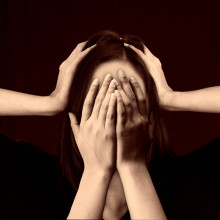
What is the menopause?
Imogen Shaw; Dorothy Byrne, Murray Edwards College Cambridge
We’re going to take a look at something that affects one in every two people on the planet but almost always never gets mentioned in school sex ed - the menopause. First Dorothy Byrne, President of Murray Edwards College, Cambridge, talks us through her experience, then Chris Smith talks to GP Imogen Shaw about what exactly is happening during the menopause...
Imogen - It tends to be between 45 to 55, 80% of women will have some kind of symptoms: flushes, that feeling of rising heat, night sweats, and most women also notice a sleep disturbance. Even if they don't wake hot at night, their sleep pattern changes. Then there's the more psychological symptoms that are not always so commonly known about, the sort of increased anxiety that women feel: general low mood or mood swings, from irritable to tearful. There's the increase in headaches in some women. And then there's the sort of physical changes that women notice: hair loss, skin, and hair drying. A very common complaint is this increased midriff weight gain. The other symptom which is very common, and I think underdiagnosed and undertreated, is genital urinary symptoms: vaginal dryness, pain with intercourse, increased urinary tract infections, overactive irritable bladder with this increased frequency of needing to pass urine. Those are the sort of the main spectrum of symptoms that women notice either all or some of.
Chris - Those are quite common and general symptoms and complaints anyway. So how would a woman disentangle it happening - because she's going into the menopause from it's just one of those things? Is it the frequency with which these things happen?
Imogen - Yes, and the pattern of symptoms because there's no diagnostic test for the menopause. And in fact, we discourage doctors from checking hormone levels because they fluctuate so radically that the levels are inaccurate. So it's a clinical diagnosis, but it's diagnosed on a pattern of those symptoms. But yes, I agree there are common symptoms, but they get worse and more persistent and more intrusive.
Chris - What's actually going on inside a woman though to make her have, or experience, these symptoms?
Imogen - Throughout our adult life the ovaries produce eggs, which then are released once a month and will then go on to produce a period if they're not fertilised. The ovaries have a finite number of eggs, which are determined at birth and are used up throughout our lifespan. And we then tend to run short of eggs around the age of 50, which then decreases their output of hormones, including oestrogen, which then creates the symptoms that I've described.
Chris - In effect, then, there are responses all over the body to these hormones.
Imogen - Absolutely. I mean, every tissue in the body has oestrogen receptors. So our brain, our heart, our blood vessels, musculoskeletal system, breasts, uterus are all oestrogen-responsive to a certain extent.
Chris - Does the body therefore have a process of getting used to a lower level of oestrogen then? Because it's been used to seeing quite high levels when a person is not in the menopause, but then once the menopause has happened and you go into this state of much lower oestrogen, is it that you settle down and then things become normal again for you? Or do people have to experience those symptoms indefinitely?
Imogen - No, it's the fluctuating oestrogen levels that give us symptoms. And in the majority of women, once they're through the menopausal transition and they've now steadied out at a much lower, but stable, oestrogen state, the symptoms disappear. In about 7% of women, these symptoms don't disappear and they still continue flushing well into even... I see 90 year olds who are still flushing, not usually with the same intensity as during the menopausal transition, but they do still have some mild symptoms.
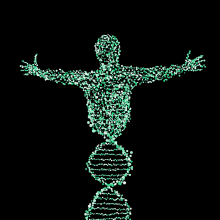
30:32 - Genetics of the menopause
Genetics of the menopause
Catherine Aiken, University of Cambridge
Arguably, one of the key questions about the menopause is when this will happen to an individual - knowing that would take a huge weight off many couples shoulders, because it would help them to plan better when to start a family. A major determinant is down to the genes you carry as a recent, very large study published in the journal Nature has shown. Chris spoke with one of the team behind that work, Cambridge University Obstetrician, Catherine Aiken...
Catherine - We looked at millions of genetic variants across hundreds of thousands of women - there are over 13 million places in the genome where you can have variations in your genetic code. And when we looked at how those were linked to age at menopause, we could identify nearly 300 independent signals within the genes that could explain a large amount of the variation in the age at which women were going through the menopause naturally.
Chris - How did you gain access to so much information about so many people?
Catherine - These are databases available to scientists worldwide to study problems exactly like this, where you need an enormous number of people to be able to sift through so many tiny, tiny, tiny little pieces of the genetic code. The trouble is that there's so much variation naturally in the genes of different people. And so you need an awful lot of women to add together, to be able to predict with any kind of accuracy when somebody would go through the menopause.
Chris - I see. So you've basically got a massive, great group of women. And you're able to ask in this group, are there any parts of the genome that keep cropping up as different in relation to how their age at menopause changes? So you can see there's a sort of link there between that bit of the genome changing in a certain way and the age of menopause changing in the same direction each time.
Catherine - That's right. And we find nearly 300 different places across the genes where that is true. Some of those have a very strong effect, and in other places the effect size is less. But when you add up all those tiny, tiny variations, you find that you actually get quite a powerful effect on your age at menopause. Normally when we think of genetics, we think of a single gene changing and that having a profound effect on whether an individual has a medical condition or not. But in this case, what we find is that there's no single gene. It's a very subtle effect of lots and lots of genes added up. And that's why age at menopause has traditionally been so difficult to predict and why it's been very, very hard to know who's going to go through the menopause at 40 and who might still be premenopausal well into their 50s.
Chris - I suppose what one can do is to ask, well, now you've got those regions of the genome that seem to have this influence, what do those genes in those regions of the genome do? Because if you know what the genes do, that can give you some kind of insight into what the mechanism of an earlier or a later menopause might be.
Catherine - Yes, so that's really interesting. When we look at all those genes, a large, large number of them are connected with what's called the DNA damage response. Basically that's the biological system that makes sure that cells are maintained in their young and healthy state - it's the body's natural repair system. The trouble is that when the body's natural repair system isn't working so well, then that has a profound effect on the ovary. As we already heard, the eggs in the ovary are set before birth, and so it's even more important for eggs than other cells that they are well maintained and that the cells around them that support them are well maintained in terms of constantly repairing any damage, because those cells have been in the ovaries for so long - over 40 years in most cases. And so these genetic variants that we find are mainly to do with how well you can maintain and repair all the cells that support your eggs in your ovaries, which mean that they last longer, if you carry certain variants in those genes compared to others.
Chris - And if you know what those variants are, and you know that some seem to associate with better DNA repair and therefore longer lived eggs, and some seem to associate with a less powerful DNA repair process and therefore eggs that might wear out more quickly, does this mean we are now approaching a stage where we can make some kind of prediction about who might be at risk of an earlier menopause or even roughly when that menopause might happen?
Catherine - We're not quite there yet. We are absolutely approaching that and certainly this recent study gets us a whole big step closer to that. Before we did this study, we thought we knew about 15% of what contributed to somebody's age at menopause. This has taken us up to closer to 40%. It's still not good enough to use in a clinical setting for an individual person.
Chris - If it explains 40%, what's the other 60%?
Catherine - So there are probably genetic variants that we haven't found yet. We also know that there are lifestyle factors: alcohol consumption and tobacco smoking affect age at menopause. Those will all be additive and what we'll find is that there are certain things that interact with certain genetic variants, so smoking may be particularly bad for people who carry particular genetic links.
Chris - One other thing I'd like to pick up with you in this study, because you were finding genes that are linked to DNA damage and repair, and there are other diseases which are really profoundly tied up with DNA damage and repair, but also linked to hormones. I'm thinking, for example, some of the cancers, especially things like breast cancer. Was there any associations that you found in this study in terms of age of menopause and risk of those sorts of conditions?
Catherine - Yeah, absolutely. So the amount of data that we had - the biobanks that we use - are extremely well characterised. What we were able to do was then go back and look at women who had different combinations of genes and what their other health outcomes were. And that's really interesting to us because what we found was very strong associations between genetic patterns that predicted early menopause and genetic patterns that predict other diseases. What we found was that for women whose age at natural menopause was predicted to be later, their risk of several types of cancer increased, and those are the particular types of cancer that we know are linked to hormones. That really was exciting for us because it validates that connection between the genetic pathways that are causing age at menopause and how that interacts with a woman's health globally. So her risk of breast cancer, her risk of ovarian cancer, and then other things like type two diabetes and so on, that are clearly bound up, not only with genetics, but also with the hormonal effects of the menopause and so on.
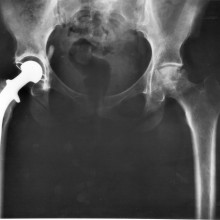
38:09 - How does menopause affect the bones?
How does menopause affect the bones?
Juliet Compston, University of Cambridge
We’re going to turn to the skeleton, because without the bone-strengthening effects of oestrogen, fractures become much more common in post-menopausal women. With Chris Smith to explain why, how we can monitor this and what we can do about it is Juliet Compston, Emeritus Professor of Bone Medicine at the University of Cambridge…
Chris - To what extent is a woman's bone fracture risk increased after menopause?
Juliet - It's hugely increased. So at the age of 50, one in two women can expect to have at least one fracture during their remaining lifetime.
Chris - That's a lot. So how does that compare with a man then?
Juliet - It's still quite common in men, but less so, so about one in five men.
Chris - And we think that this is down to the loss of oestrogen that occurs when a person goes through the menopause?
Juliet - It's partly due to that. Both in men and women, bone loss occurs around the age of 40 and continues throughout life. So it's not only due to oestrogen, it's due to many other factors. But in women during the menopause, there is an acceleration in the rate of bone loss, which is due to oestrogen deficiency. And that is one reason why the risk in women of having a fracture later in life is greater than in men.
Chris - How can you therefore spot who might be one of those one in two women?
Juliet - Well, we know there are a number of risk factors, which increase your risk of fracture. One is age, which obviously you can't do anything about apart from be aware that the risk of fracture becomes increasingly great as you age. If you've had a previous fracture, that is a very strong risk factor for having a subsequent fracture and should alert you and your GP to discuss being tested. And then there are other factors such as steroids, which you use in the treatment of many diseases, which increase your risk of fracture, things like rheumatoid arthritis, other diseases, which have an independent effect on fracture risk. If you have a family history, that is a strong strong risk factor, particularly if you have a parent who suffered a hip fracture. And then there are other risk factors like heavy smoking, alcohol abuse and body weight is very important. If you have a low BMI, you're at increased risk of fracture. Also, actually, if you're obese, you also have an increased risk of fracture.
Chris - What about exercise? Because we're often told that it's very hard to say how beneficial exercise is. That's loading your skeleton quite a lot, isn't it? Does that have a beneficial effect?
Juliet - Yes. Exercise is definitely good for the skeleton. We know that particularly in young people, exercise can actually increase the size of your bones as well as their mineral content and their strength. Whether exercise can reduce fractures in later life is slightly less certain. It can certainly increase your bone mass to some extent, but whether it's effective enough to reduce factor risk, hasn't yet been proven.
Chris - If someone presents to you with the sort of track record that you've just been outlining of risk factors, how do you investigate them?
Juliet - If they have one or more of the risk factors I've outlined, and particularly if let's say they're over the age of 50 whether a man or a woman, then I would first of all do something called FRAX, which is a free, factor risk algorithm on the Internet, which gives you a 10 year probability of fracture. And if that is very high then they probably are already indicated to have treatment. And if it's intermediate, you can do a test called a DEXA scan, which is a very simple test. It just involves lying on a couch for 10 to 15 minutes. There's no tunnel or anything. There's just a slim bar that goes over your body. That will actually give a measure of the amount of bone mineral in your spine and in your hip.
Chris - If it turns out someone's in the danger zone, having had these sorts of investigations, what can we do medically to try to reduce the risk of a person having a fracture?
Juliet - Well, we always start off by advising lifestyle measures, and they're the usual suspects. So stop smoking, don't drink too much alcohol, have a good balanced diet. Vitamin D - we believe it's important to have enough vitamin D through sunlight exposure where that's possible, and also physical activity as appropriate to the patient. But, in terms of pharmacological interventions, we have a really effective range of treatments which have been shown to reduce fracture risk. And these basically are divided into drugs which stop bone being removed excessively from the skeleton. And the most well-known of these are the bisphosphonates, but hormone replacement therapy, HRT, which of course contains oestrogen also acts in the same way. And then we also have a newer group of bone-forming agents, which actually stimulate bone formation, which can also be used.
Chris - And are these any good?
Juliet - They are very good. They reduce fractures in the spine, the hip and elsewhere in the body
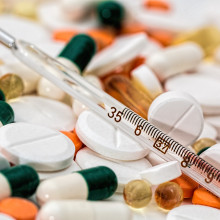
44:14 - Managing the menopause
Managing the menopause
Heather Currie, Menopause Matters
The menopause may produce many symptoms such as disturbed sleep and hot flushes, as well as other health consequences such as osteoporosis. What can we do to combat some of these issues? Gynaecologist and founder of the publication Menopause Matters, Heather Currie, talked with Adam Murphy...
Adam - What options are available for women who are beginning to experience the menopause?
Heather - The first option, which all women need to know about and can continue addressing are diet and lifestyle issues. And as we heard from Juliet, this can have an impact on bone health, but also cutting down smoking, cutting down alcohol, cutting down caffeine, maintain a healthy diet and plenty of exercise can also help those early menopausal symptoms that we heard Imogen talk about. In practice though, many women may be really struggling with symptoms and may not be in the right mindset to change their diet and lifestyle. And often we do need to help them get symptoms under control, but then continue to advise and encourage about the diet and lifestyle changes. The most effective treatment is hormone replacement therapy, and it really does what it says on the tin. It replaces the hormone. We've heard that the consequences of menopause, both the early symptoms, the intermediate symptoms, which are related to vagina and bladder problems, and also long-term symptoms such as changes in bone health are all due to lack of oestrogen.
Heather - And therefore what HRT aims to do is give the oestrogen back. There are many ways that oestrogen can be taken. It can be taken in a daily tablet, a twice weekly patch, a weekly patch, a daily gel that you apply to your thighs or to your arms, and a spray, which is the newest option, which you can apply to your arm. So the main part is oestrogen. And as we've heard there's oestrogen effects throughout the body, and when it gets into the circulation, it goes around the body and helps those effects that we've heard about. Unless someone has had their womb removed, i.e. had a hysterectomy, then the other hormone that's involved is progestogen. So this is needed to prevent oestrogen stimulating the lining of the womb, which if went on for long enough could increase the risk of thickening of the lining and in fact, endometrial cancer. But we have ways of combining the progestogen which can be really simple, such as within the daily tablet or within a patch, or can be taken as a separate option along with your separate oestrogen. So there's lots of options to think about. And it's really important that women take time to get the information and find out what's going to be best for them.
Adam - And when we're talking about any kind of treatment, any kind of therapy, there are side effects. As Catherine mentioned, there's a higher risk of breast cancer if the hormones stay in the system longer. Does that kind of thing apply here to HRT as well?
Heather - There is an association with a small increased risk of breast cancer in certain types of HRT. So if a woman is able to take the oestrogen-only - as I said, that's only relevant if she's had a hysterectomy, had the womb removed - then there seems to be little or no risk of an increased risk of breast cancer. However, if the oestrogen is combined with progestogen, then certain types of HRT taken for more than five years after the age of 50 may be associated with the stimulation of breast cancer cells that are already present, not actually causing the breast cells to turn into cancer. So perception of risk is really important and really complicated. So if one woman is having minimal menopausal symptoms and knows of someone close to her who had breast cancer, then she's going to be more concerned about the breast cancer risk than the benefits from HRT. Whereas another woman who doesn't have any sort of close history of breast cancer and is having significant symptoms then for her, there's going to be far more benefits by taking HRT, but overall for the majority of women under the age of 60 or within 10 years of the menopause who are having menopausal symptoms and may have risk factors for bone health, or may just have the risk factors for bone health, the benefits of HRT far outweigh the risks.

48:26 - Menopause in the workplace
Menopause in the workplace
Dorothy Byrne, Murray Edwards College Cambridge; Heather Currie, Menopause Matters
Adam Murphy spoke with Heather Currie about managing the menopause, and both heard how Dorothy Byrne helped to introduced one of the first workplace policies when she was at Channel 4…
Dorothy - A lot of what a menopause policy is about is drawing together all the other policies that already exist. So it's not about a company spending lots of money. A lot of managers don't know anything about the menopause. So the first thing is to inform everybody about how severe the effects of the menopause can be. About a quarter of women suffer really significant problems, which often make them feel like giving up work. Secondly, it's to explain to women themselves, if you feel ill because of the menopause, you feel ill. So just as you wouldn't go to work, or you might come in a bit late if you felt really ill for another reason, it's fine to take time off because you feel really ill about the menopause. And then the third part of it is that we brought in doctors to explain the menopause to women and to tell them the facts about HRT. A lot of GPs don't know much about the menopause and give women the wrong information and tell them they just have to put up with it. So most of the policy is in fact about education and it also makes older women feel valued. You know, we are wanted round here. So I think it gives a very important message in that way too.
Adam - So Heather, what do you think of that? Do you think that that kind of thinking is a good idea, practical to introduce across the board?
Heather - Yeah, it's absolutely fantastic. And we are hearing more and more organisations that are developing menopause frameworks and policy. And as was described, it's really just about giving information, both to the women and their families and the people that they work with and anyone that is around them so they can have a better understanding of what's going through and what the options are.
Adam - And then what other sorts of support or non-pharmacological measures are available. I'm thinking sort of like the psychological end of things. It's a massive change.
Heather - It is a massive change. And actually what has also been shown to help menopausal symptoms, particularly the disturbed sleep that we've heard about that can have a huge impact, the flushes to some extent, and also the mood changes is cognitive behavioral therapy. And that's been shown to be really, really helpful to help women just deal with what's happening to them. The most important thing in all of this, as we've referred to a little bit through the programme is the information, the education that needs to start from school. Women are well-prepared for, or girls prepared for periods, for contraception, for pregnancy. But we need them from a very early age to understand what's going to happen and what to look out for because often with women, they are not prepared, particularly for the mood symptoms. And often this goes on for a while, as we've heard already, before it's actually recognised to be hormonally related.
Adam - And then for anyone listening, who, who might be going through the menopause or starting to, what advice would you have for that person?
Heather - Don't dread it, first of all. We do hear lots of awful stories and some women are severely affected by the symptoms that can have a huge impact on their life, but that isn't for everyone. It's being forearmed. It's having access to accurate information so they know what to look for. They know that HRT is an option, not seeing it as something you shouldn't mention, but something that you want to talk about. So it's a natural phase, absolutely, but it can have a big impact on our symptoms, on our bone health, and also on our heart health. So it's being prepared to deal with it in the way that suits each women. There isn't a blanket approach. There isn't one method or treatment that suits everyone. It's finding the information, seeking support and individualising. That's the key.

53:41 - QotW - Do other animals get itchy?
QotW - Do other animals get itchy?
Harry Lewis spoke to Gerhard Schlosser from the National University of Ireland Galway to find out more...
Gerhard - We’re all itching to know! The truth is that the itch has only been studied in humans and a handful of other mammals. We all know it as a rather unpleasant sensation, it makes us want to scratch. And just like pain, it actually acts as a warning signal, alerting us to dangerous conditions. The want to scratch can be quite beneficial, helping to remove objects that cause irritation. So, through evolution, our perception of the itch has probably allowed us to defend ourselves from bugs, weeds and germs that attack our skin.
Harry - We perceive ‘the itch’ with sensory nerve cells that spread into the skin where they form free nerve endings.
Gerhard - There are different subtypes of such sensory cells, each of which specialized for a different stimulus. Apart from sensory cells that respond to touch or to temperature, there are those that are activated by tissue damage which we perceive as pain, and those that react to skin irritation encouraging the individual to scratch. We have all seen mammals, like horses and dogs rubbing their backs and sides against an object to remove annoying flies or ticks! But these multiple subtypes of sensory nerve cells are also found in other vertebrate animals – that is animals with a backbone - such as fish or frogs.
Harry - In short, we don’t know for sure whether any of them feel the same itch sensation that we experience, but we might be able to make an educated guess, afterall many vertebrate animals are known to scratch or rub themselves when their skin is irritated.
Gerhard - A recent study even found sensory cells in zebrafish that carry the same receptor molecules on their surface as human itch receptors. This suggests that fish, like mammals, can perceive it, they do get itchy. And because this receptor molecule is so widespread we can almost assume that it originates from a common ancestor. An ancestor that passed the same itch down to amphibians as it did zebrafish. I think it’s safe to say that although more research is needed, frogs get the urge to scratch their itches, just like us.
Harry - Now, all I can think about is that one point in my back I can’t reach, you know the patch. I’d need frog legs to get to it.










Comments
Add a comment